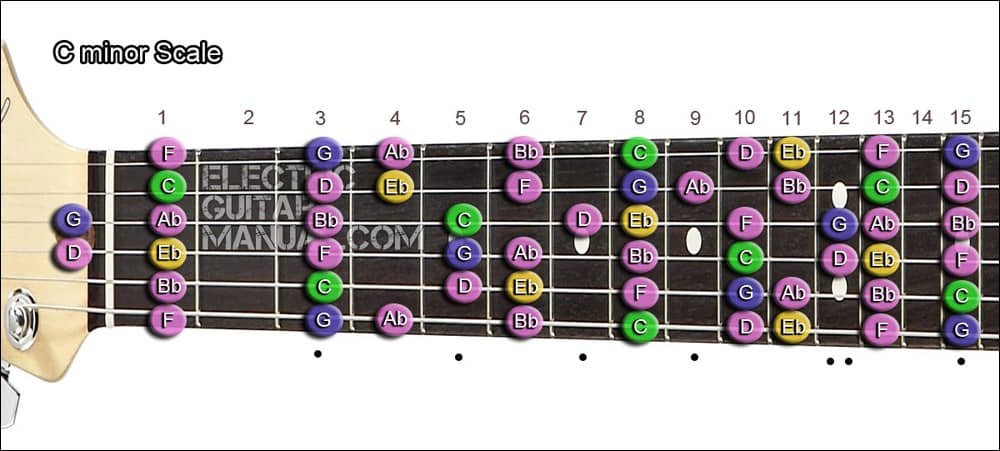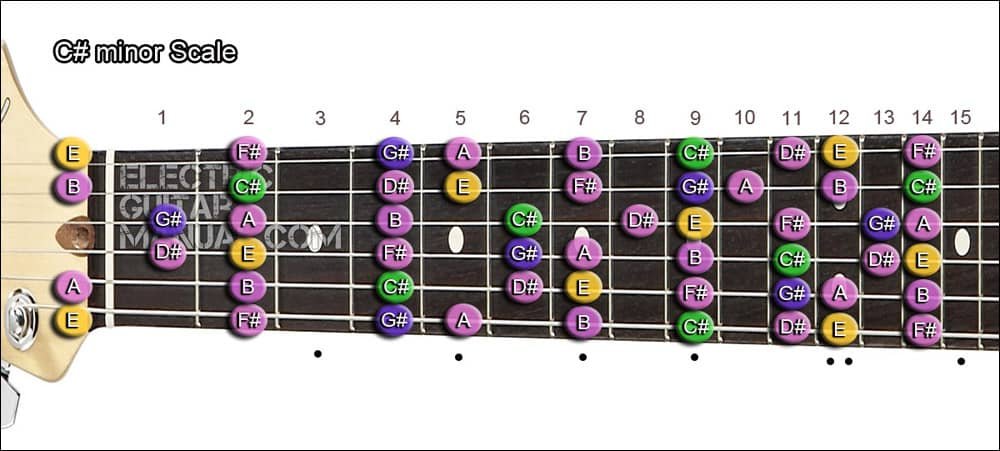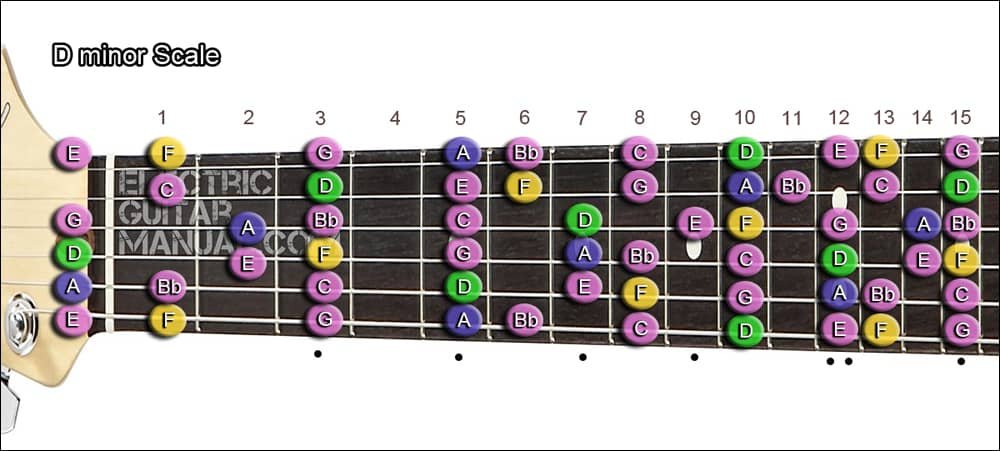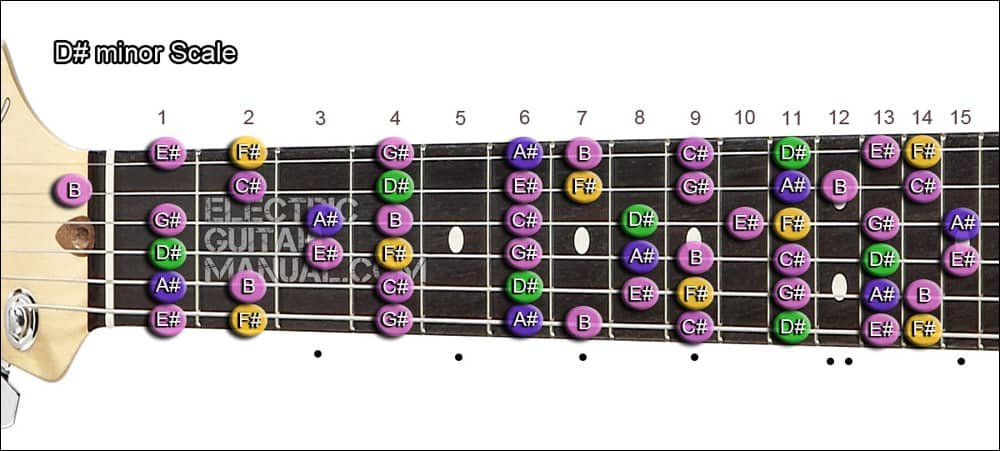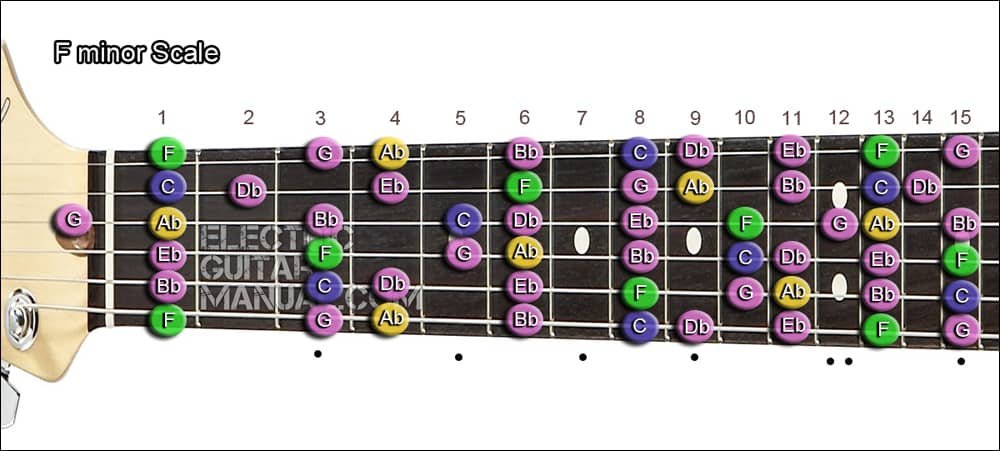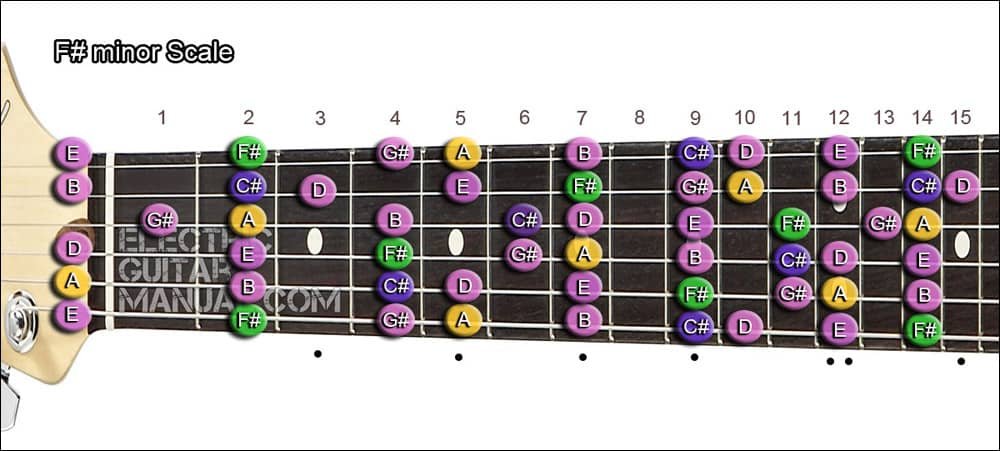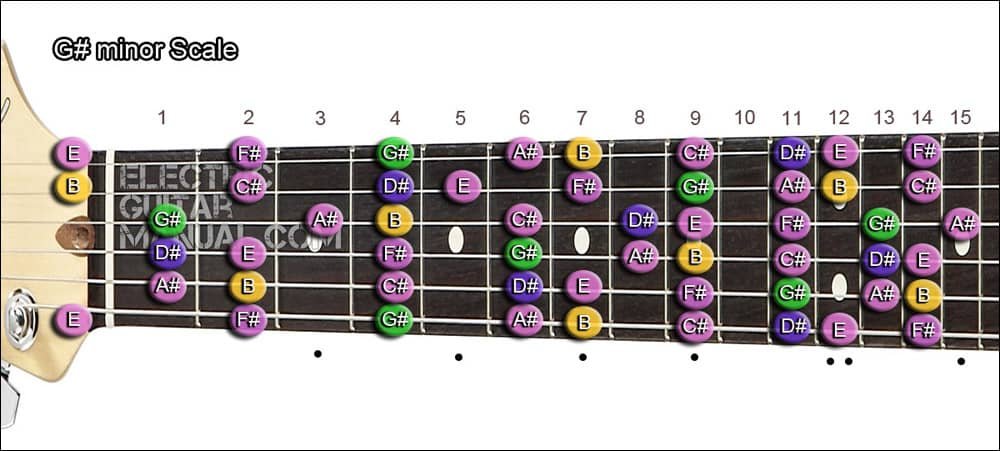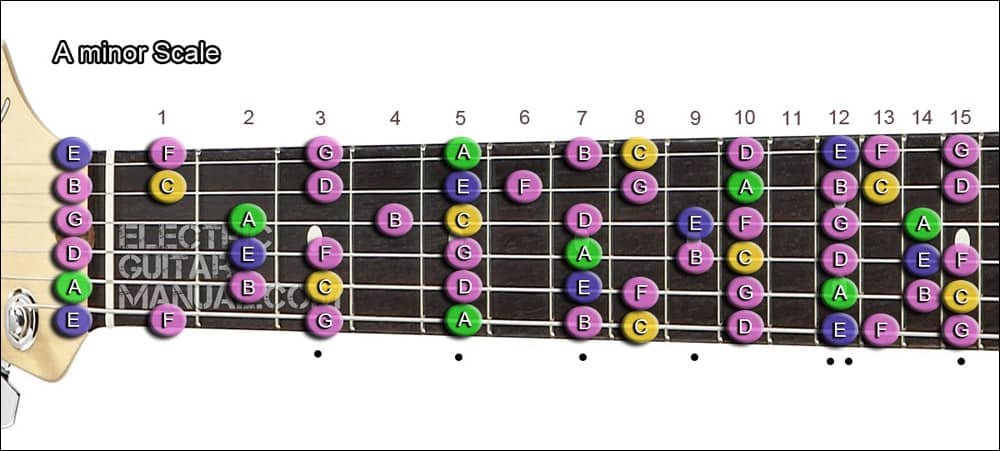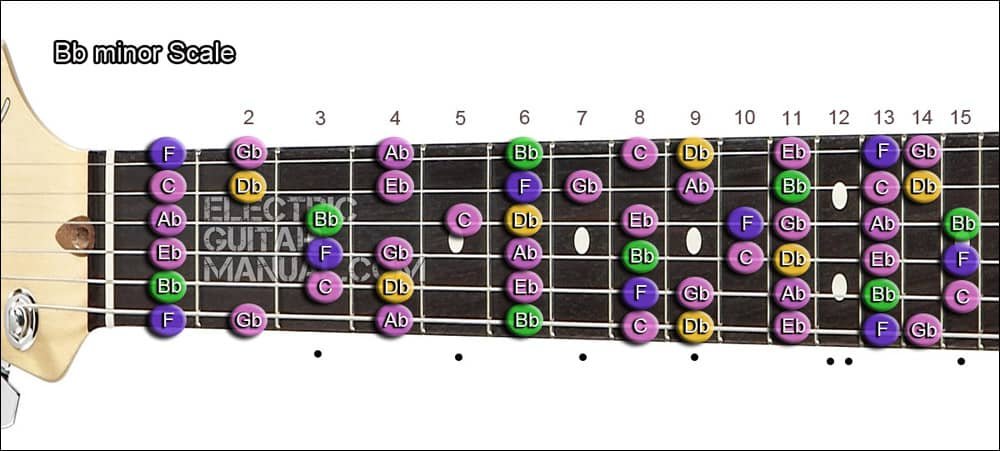
MINOR SCALE for Guitar in ALL Possible Keys and in the Entire Fingerboard. 12 Tones in the Best Charts and in The Best GLOSSARY OF SCALES.
Minor scales are widely used in the most popular guitar solos, due to their more uncertain tonal response compared to the major scale. For this reason, these types of scales offer more possibilities or resources when creating a longer and richer guitar solo.
Most of the most popular rock songs are in a minor key. But this scale is also widely used in major keys, so the minor scale has no competition in terms of versatility and use.
Minor Scale: Notes
The natural minor scale has the same structure as the diatonic major scale, but the intervals begin from the 6th note of the Major scale. This note or key is known as Relative Minor.

In reality this scale would be a Greek Mode (Aeolian Mode) just like the major scale (Ionian Mode), since it is the same structure or arrangement of the intervals, but starting the scale in a different interval.
How to Use Guitar Scales
The main solution to the question of how to use guitar scales is to know the key of the musical theme on which we want to practice. Once this information is known, we will go to the corresponding scale. For example, if a song is in the key of G Major, we should generally use the G Major or its Pentatonic scale.
In the case of minor keys, the same thing simply happens. If the key of a song is minor, we would opt for the corresponding minor scale or its pentatonic.
The simplest method to know the key of a song would be to search for it directly on the Internet. We would only have to place the title of the song in the corresponding search engine followed by the word “Key”, and the matter would be fixed. How to use Guitar Scales.
Menu of Minor Scales in all Possible Keys
Complete Glossary of MINOR SCALES for Guitar, in ALL Possible Keys and in the Entire Fingerboard.
C minor Scale on Guitar – Cm
The Cm scale is made up of the following: C – D – E♭ – F – G – A♭ – B♭.
Arrangement of the Notes of the Cm Scale, Distributed over the Entire Fretboard of the Guitar. The green circles mark the Tonic Note, the blue circles the Fifth Degree, and the yellow circles the Third Degree. You can see how the notes colored in green, blue and yellow form C minor chords.
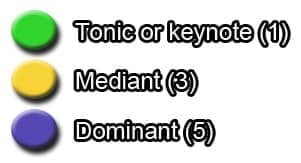
C#m Guitar Scale
The C#m scale is made up of the following: C♯ – D♯ – E – F♯ – G♯ – A – B.
D minor Scale on Guitar – Dm
The Dm scale is made up of the following: D – E – F – G – A – B♭ – C.
D#m Guitar Scale
The D#m scale is made up of the following: D♯ – E♯ – F♯ – G♯ – A♯ – B – C♯.
E minor Scale on Guitar – Em
The Em scale is made up of the following: E – F♯ – G – A – B – C – D.
F minor Scale on Guitar – Fm
The Fm scale is made up of the following: F – G – A♭ – B♭ – C – D♭ – E♭.
F#m Guitar Scale
The F#m scale is made up of the following: F♯ – G♯ – A – B – C♯ – D – E.
G minor Scale on Guitar – Gm
The Gm scale is made up of the following: G – A – B♭ – C – D – E♭ – F.
G Sharp minor Scale – G#m
The G#m scale is made up of the following: G♯ – A♯ – B – C♯ – D♯ – E – F♯.
A minor Scale on Guitar – Am
The Am scale is made up of the following: A – B – C – D – E – F – G.
B Flat minor Scale – Bbm
The Bbm scale is made up of the following: B♭ – C – D♭ – E♭ – F – G♭ – A♭.
B minor Scale on Guitar – Bm
The Bm scale is made up of the following: B – C♯ – D – E – F♯ – G – A.
Scales by Types in All Keys
KNOWN other of the most used scales such as the Major Scale, and the Major and Minor Pentatonic Scales. The best graphics in all possible keys.
KNOW in the Link Below an Extensive Glossary of Scales, and Learn to Use Them in a General Way.
How to Learn Guitar Scales
The best method to learn guitar scales and their structures would be to divide the scale into parts. We learn piece by piece its arrangement on the fretboard, and then we put all the parts together to have knowledge of its structure throughout the fretboard. How to use Guitar Scales.

